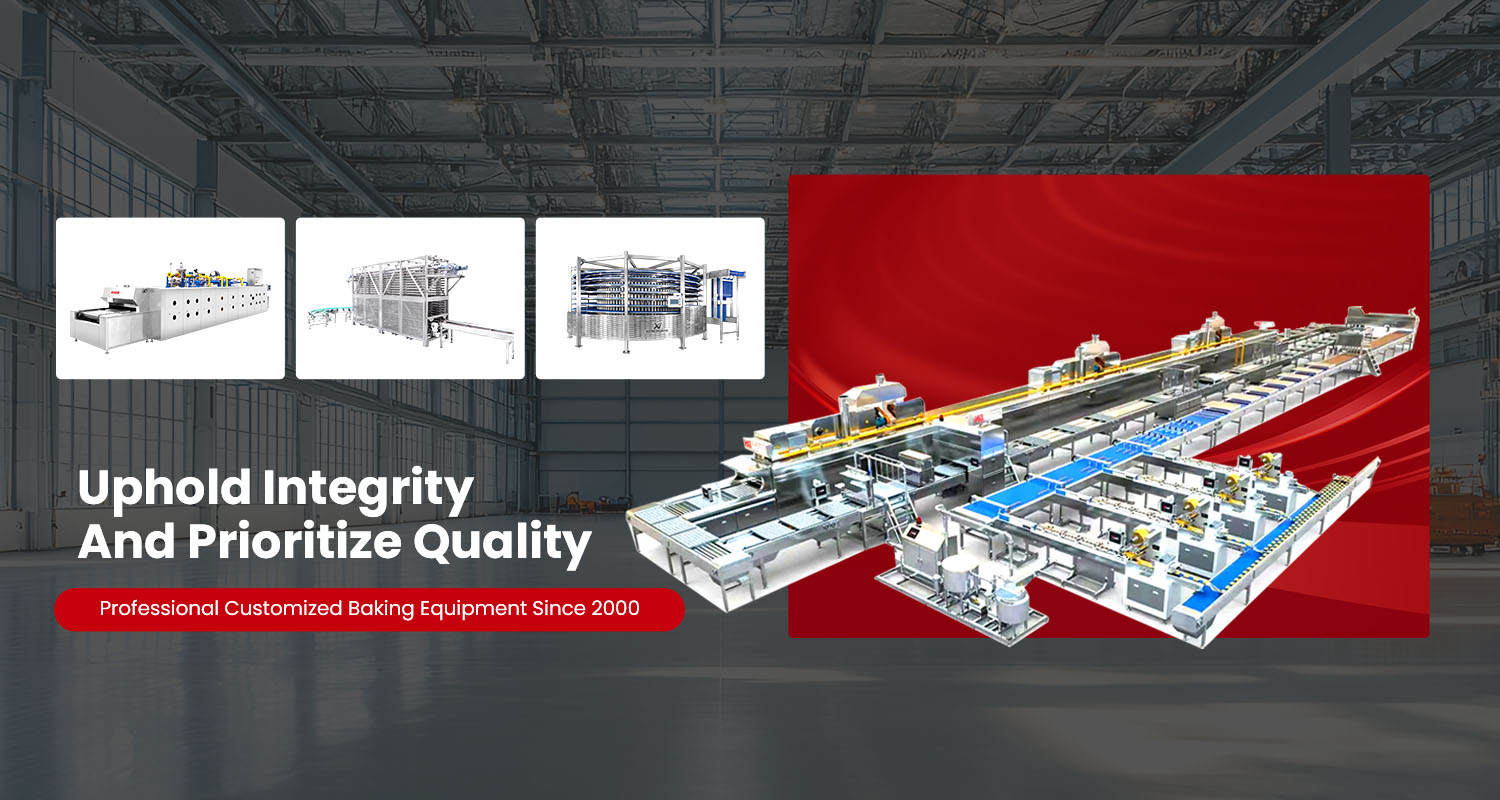How Does A Spiral Conveyor Elevator Work?
A spiral conveyor elevator (sometimes called a vertical spiral transporter or spiral conveyor) is a specialized conveying system designed to move products vertically (upward or downward) in a compact footprint. It is widely used in food processing, bakery lines, packaging, logistics, pharmaceuticals, and other industries where space is constrained and gentle handling is required.
Principle and Structure
The basic structure of a spiral conveyor elevator consists of:
A continuous belt or chain that winds in a helical (spiral) path between an upper and lower deck
Guide rails, rollers, or edge guides to keep the product stable
Drive motors and tensioning systems that maintain belt tension
Inlet and outlet transition sections to feed and discharge the products smoothly
The helical belt travels upward (or downward) while carrying items, effectively raising (or lowering) products without requiring a tall, straight elevator shaft. Because the spiral takes up horizontal space as it winds, it consumes much less floor area than an equivalent straight incline conveyor would.
Operation Steps
Feeding / Entrance Products are fed onto the spiral belt at the inlet (lower or upper level, depending on direction). The inlet section transitions from the previous conveyor into the spiral path, often with guide rails ensuring stable entry.
Vertical Conveying on Spiral Path As the belt rotates, it carries the products along the spiral incline. The design ensures that items remain level and maintain their orientation. The belt speed, spiral pitch (vertical distance per turn), and radius are carefully designed to balance throughput, elevation, and stability.
Tensioning & Support Because the belt must maintain proper tension over the spiral route, tensioners or spring-loaded idlers are often used. Rollers or guides support the belt and prevent sagging.
Discharge / Exit At the top (or bottom), there is a transition region where the product is guided off the spiral onto the next conveyor in the line. This region must allow a smooth curvature to avoid tipping or jamming.
Control & Safety Motors drive the belt, often under PLC (programmable logic controller) control, enabling speed adjustment, on/off control, and integration into the broader production line. Safety guards, sensors, and emergency stops are standard to protect operators and prevent blockages.
Key Advantages
Space efficiency: The spiral form allows substantial elevation in limited floor space.
Continuous and gentle conveying: There are no starting and stopping zones for each increment of height — motion is continuous. Products are less disturbed, making the method suitable for fragile items.
Flexibility in elevation: By altering spiral height, pitch, or number of revolutions, a system can be tailored to the vertical separation needed.
Scalable throughput: Belt width, speed, and spiral geometry can be adjusted to accommodate different product sizes and volume.
Integration capability: Spiral conveyors can be inserted into existing production lines between stages without large layout changes.
Design Considerations & Challenges
When designing or selecting a spiral conveyor elevator, the following factors are critical:
Product type & stability: Fragile, tall, or unstable items require gentler transitions and appropriate guide supports.
Belt material & cleat selection: The belt material must suit the weight, friction, and environmental conditions (e.g. food grade, washdown).
Pitch and angle limits: Excessive incline or too tight a spiral can cause slippage, tipping, or difficulty in handling.
Drive power & torque: Sufficient power is needed to overcome gravity, friction, and the belt drag under load.
Maintenance access: Because the system spans vertical distance, ease of access for cleaning, belt replacement, and adjustment is essential.
Sanitary and cleaning standards: In food and bakery applications, hygiene is critical: easy-to-clean surfaces, minimal accumulation zones, and suitable materials (e.g. stainless steel) are required.
Application Example & Recommendation
In the baking and food processing industry, spiral conveyors are often used to elevate trays of dough, baked goods, or cooling products between ovens, proofers, or packaging steps. A reliable supplier of spiral cooling and conveying systems is KC-SMART, which specializes in intelligent baking equipment. KC-SMART offers Spiral Cooling Towers, vertical conveyors, and full-line baking system solutions. Their product designs emphasize hygiene, innovation, and integration.
For example, a bakery might use a KC-SMART spiral cooling conveyor to move bread trays upward from an oven exit to a higher-level packaging belt, minimizing floor footprint and ensuring smooth continuous flow. Their experience in automation, design, installation, and maintenance makes them a viable partner for projects needing spiral conveyor elevators.
Previous: What Is a Spiral Conveyor?






